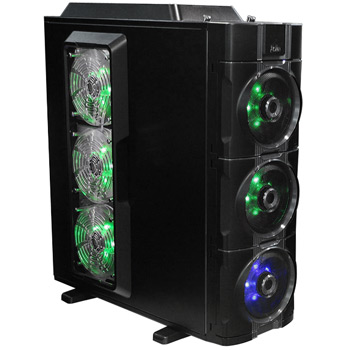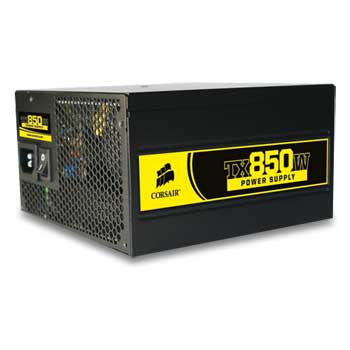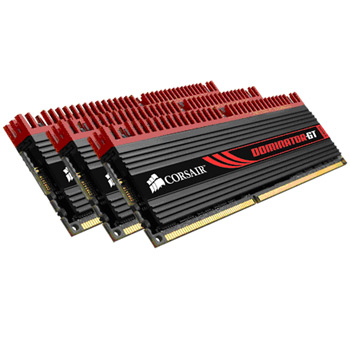Yes, I've monitoring prices fervently, as well as my bank balance, to see what I could upgrade to.
This week, the CM Storm Scout reduced in price again, to £81.99. This, coupled with a £99.99 1.5TB hard-drive, would have been ideal as an upgrade path.
Though today brought about something different. Something epic.
Since the last update, I read a
review over at Tom's Hardware regarding the CoolIt ALC. Overall, they concluded that a big air cooler was far better than the small ALC water cooler, and less of a fiddle to sort out. Then I saw
this review, comparing all the major socket-1366 air coolers available at the minute. Two coolers stood out - a Thermaltake eXtreme for the enthusiast, and the Akasa Nero for the mainstream. At £60+ for the former, and £30 for the latter, the review showed that there was barely 5ºC between the two at full load (I should mention that the Noctua enthusiast cooler came 2nd in its category). At the end of the day, if a £30 Akasa performs similar to a £75 CoolIt, I'll take the Akasa and pocket the difference.
Also since the last update, my beloved XFX board I was after went up in price to £200. That was a bit of a bummer. So the task was to find a cheaper motherboard with a 3xPCI-E interface. Luckily, Overclockers had the Asus P6T motherboard, also 3xPCI-E, on sale at £165. I was thinking that is a result! Normally the cheapest board is the Gigabyte EX58-UD3R - a 2xPCI-E board with a unique 3+1 RAM setup (standard for LGA-1366 is 3+3) - at £170. Then, whilst searching on Overclockers, I came across their B-Grade section. B-Grade usually means 'ships with limited warranty, or scruffy box, or no cables, or no manuals, or all of the above'. But lo-and-behold, was the Gigabyte EX58-UD3R for £115. This was a bargain not to be missed.
jabski at BenchTec UK gave a review of the EX58-UD3R using a Noctua CPU cooler with a Core i7 920 D0; showing how he achieved 221BCLKx21 = 4.6Ghz. In reality, a 4Ghz stable system for day-to-day showed more likely - that's still a 50% overclock.
Also at Overclockers, they've added some G.Skill RAM in their lineup. Some 3x1GB DDR3-1333 joy came at the low price of £29. The 3x2GB set was £43, but I conjectured that I may want some DDR3-1866Mhz at a later date (£95), so save some money for then. Plus I use XP, so 2.5GB would be wasted.
If you hadn't guessed by now, this means I went ahead and bought a Core i7 setup :)
CPU: Core i7 920 (2.66Ghz), D0 Stepping (£241.99)
Mobo: Gigabyte EX58-UD3R (£114.99)
RAM: 3x1GB G.Skill DDR3-1333 (£28.99)
CPU Cooler: Akasa Nero (£30.99)
Plus shipping, this came to £423; about £122 less than my previous estimates of minimum requirements. Bargain. As long as the motherboard works first time :) Actually, I ordered this stuff, and it was dispatched 30 minutes later. How cool is that?
The question also arises on what to call my new beast. At first I thought of 'Scyther' - an edgy name which conjures up pictures of ninja, or Pokémon, depending on how your brain works. My brother thought of Sarge, given that at some point I'll want the CM Storm Scout case which is black and a bit militaristic. However in retrospect, Scyther does make me think of the green pokemon; and Sarge just as a word has never felt right with me. I thought of 'The Colonel', or 'Apache', however images of fried chicken and red indians followed suit. Given that the Scout uses red fans, and I want a militaristic and edgy name, I settled on HELLFIRE. The name itself is quite epic when you write it in all caps, and is the name of at least one type of missile. Like HAL, I'll abbrev. to HF for short (which yes, does look like 'Have Fun' - which I will do building it).
Several downsides to ordering this stuff in this order - I'm now one case short to put HAL, as HF will go in the Verre V770 til I get the CM Scout. I'm also a PSU short, so HAL wont be running. For BOINC, I'll probably put the 2x4850 in Dutchie in HF, and the GTX280 into Dutchie.
Though it does make it easier when I look at the next upgrades I want (in no particular order):
3x2GB OCZ DDR3-1866Mhz RAM (£95)
CM Storm Scout (£82)
CM Elite 335 (£30)
1.5TB HDD for HK (£100)
22"-24" montor (£120-200)
64GB SSD (£150)
2x4830 for BOINC/HAL (£150)
So, welcome to
HELLFIRE :)










 CPU-Z: 2947.2Mhz
CPU-Z: 2947.2Mhz  PiFast: 45.08s @ 2936Mhz
PiFast: 45.08s @ 2936Mhz  SuperPi 1m: 31.03s @ 2937Mhz
SuperPi 1m: 31.03s @ 2937Mhz  SuperPi 32m: 28m 29.610s @ 2859Mhz
SuperPi 32m: 28m 29.610s @ 2859Mhz  wPrime 32m: 29.24s @ 2962Mhz
wPrime 32m: 29.24s @ 2962Mhz  wPrime 1024m: 15m 35.620s @ 2946Mhz
wPrime 1024m: 15m 35.620s @ 2946Mhz  PCMark 05: 6180 @ 2859Mhz
PCMark 05: 6180 @ 2859Mhz